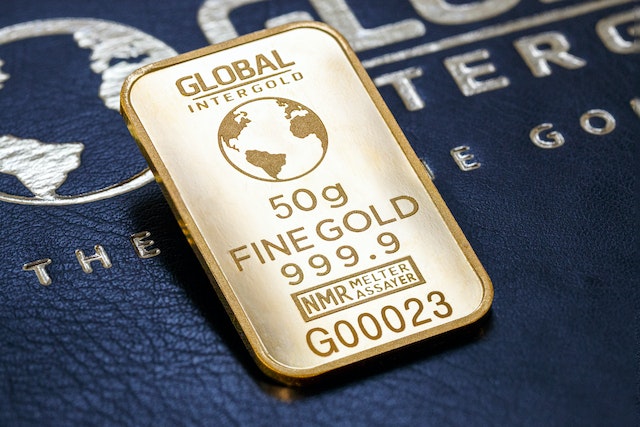Gold has been a popular investment for centuries due to its perceived value and stability. However, like any investment, gold has its drawbacks. While it may seem like a safe bet, gold investment has its fair share of disadvantages.
One of the main challenges of investing in gold is its physical nature. Unlike stocks or bonds, gold must be stored and secured, which can be costly and inconvenient. Additionally, physical gold can be difficult to sell quickly, which can impact its liquidity.
Another disadvantage of gold investment is its volatility. While gold may seem like a stable investment, its value can fluctuate greatly depending on economic and political factors. This can make it difficult to predict its future value and can lead to significant losses for investors.
Key Takeaways
- Gold investment requires physical storage and security, which can be costly and inconvenient.
- Gold investment is subject to volatility and can be difficult to predict.
- Investors should carefully consider the drawbacks of gold investment before making a decision.
Understanding Gold as an Investment
Gold has been considered a valuable asset for centuries, and many investors choose to include it in their portfolios. However, investing in gold also has its disadvantages.
One of the main drawbacks of investing in gold is that it is not a productive asset. Unlike stocks or real estate, gold does not generate any income. Therefore, investors can only profit from gold when they sell it at a higher price than they bought it for.
Another disadvantage of investing in gold is that it can be volatile. The price of gold can fluctuate significantly, which can make it difficult to predict its value. As a result, investors may experience significant losses if they buy gold at a high price and sell it at a lower price.
Investing in gold can also have an impact on the overall diversification of an investment portfolio. If an investor puts too much money into gold, they may miss out on potential gains from other assets, such as stocks or bonds.
Furthermore, investing in gold can be expensive. Investors may need to pay storage fees if they choose to hold physical gold, and the fees for buying and selling gold can be high. Gold exchange-traded funds (ETFs) can be a more cost-effective option, but they still come with management fees.
Finally, investing in gold can be affected by currency fluctuations. Since gold is priced in US dollars, changes in the value of the dollar can impact the price of gold. This can make it difficult for investors to predict the value of their gold investments.
Overall, while gold can be a valuable asset, investors should carefully consider the potential disadvantages before investing in it. It is important to have a clear investment strategy and goals in place before adding gold to a portfolio.
Physical Gold and Its Challenges
Investing in physical gold can be an appealing option for many investors due to its tangibility and perceived stability. However, there are a number of challenges associated with owning physical gold that should be carefully considered before making an investment.
One of the challenges investors face nowadays is keeping up with the demands of gold. Since
this precious metal is finite and rare, we might need more gold. While gold can be recycled,
some are difficult to remove from their plastic or metal housing, requiring chemical stripping and
purification. Learn About Gold explains how much gold is left on earth.
Storage and Insurance
One of the most significant challenges associated with owning physical gold is the need for secure storage. Gold bars and coins can be valuable targets for theft, and storing them at home may not be a safe option. This means that investors may need to pay for secure storage at a reputable facility, which can come with significant storage costs and fees.
In addition to storage, investors will also need to consider insurance for their physical gold. Insurance can help protect against loss or damage, but can also add to the cost of ownership.
Look for insurance companies that specialize in jewelry or valuable items insurance. Check the
policy limits to ensure they cover the total value of your gold or jewelry collection. Also,
consider the deductible amount you need to pay in the event of a claim.
Some policies have exclusions for certain types of loss or damage, such as wear and tear or loss
due to war or terrorism. You must understand what is covered and what is not. Many insurance
companies require a recent appraisal of your gold or jewelry collection before issuing a policy.
Ensure your items are properly appraised by a qualified and reputable appraiser to accurately
determine their value.
Once you’ve selected a gold insurance policy, periodically review and update it as needed.
Update your policy to reflect any changes in the value of your gold or jewelry collection, and
ensure that your coverage remains adequate over time.
Purity and Verification
Another challenge associated with physical gold is ensuring its purity and authenticity. Investors will need to ensure that they are purchasing gold from a reputable source and that it has been properly verified. This can be particularly challenging when purchasing gold from private sellers or online marketplaces.
Investors may also need to pay for additional testing or verification to ensure that their gold is pure and of high quality. This can add to the overall cost of ownership and may be a significant challenge for those who are not familiar with the gold market.
Buying and Selling Difficulties
Finally, buying and selling physical gold can be a challenging process. Investors may need to work with a gold broker or set up a brokerage account to buy and sell gold bars and coins. This can add to the overall cost of ownership and may be a barrier for those who are new to investing.
In addition, selling physical gold may also be challenging. Investors will need to find a reputable buyer and may need to pay additional fees or commissions to complete the sale. This can make it difficult to quickly liquidate gold investments when needed.
Overall, while physical gold can be a valuable investment option, it is important for investors to carefully consider the challenges associated with ownership. From storage and insurance to purity and verification, owning physical gold requires careful planning and consideration.
Risks and Volatility of Gold Investment
Investing in gold has long been considered a safe haven for investors looking to hedge against economic uncertainty. However, gold investment also comes with its own set of risks and volatility.
Market Volatility
One of the biggest risks associated with gold investment is market volatility. The price of gold can be highly volatile, and can fluctuate rapidly in response to changes in the economy, interest rates, and other factors. This can make it difficult for investors to predict the future value of their investments, and can result in significant losses.
Lack of Dividends
Unlike stocks and other investments, gold does not pay dividends. This means that investors cannot rely on regular income from their gold investments, and must instead rely on the value of the asset itself to increase over time.
Speculation and Liquidity Issues
Another risk associated with gold investment is speculation and liquidity issues. Gold is a highly liquid asset, but it can be difficult to liquidate quickly and efficiently in times of market volatility. Additionally, gold investment can be subject to scams and fraud, which can result in significant losses for investors.
In addition to these risks, investing in gold mining stocks can also be volatile and risky. These stocks are subject to the same market forces as other stocks, and can be highly volatile in response to changes in the market.
Overall, while gold investment can offer a number of benefits, it is important for investors to be aware of the risks and volatility associated with this type of investment. By carefully considering these factors and investing wisely, investors can minimize their risk and maximize their returns over time.
Gold Investment Alternatives and Their Limitations
Gold Mining Stocks
One alternative to investing in physical gold is to invest in gold mining stocks. This involves purchasing shares of companies that mine gold. The advantage of this approach is that it allows investors to gain exposure to the gold market without having to deal with the physical metal. However, there are several limitations to this approach.
Firstly, gold mining stocks are subject to the same risks as any other stock. This means that they are subject to market volatility and can be affected by factors such as economic conditions and company-specific risks. Additionally, the performance of gold mining stocks is not always directly correlated with the price of gold. This means that investors may not see the same returns as they would from investing directly in gold.
Gold ETFs
Another alternative to investing in physical gold is to invest in gold exchange-traded funds (ETFs). These funds buy and hold physical gold and allow investors to gain exposure to the gold market without having to deal with the physical metal. However, there are several limitations to this approach as well.
One limitation is that gold ETFs are subject to management fees, which can eat into investor returns. Additionally, the performance of gold ETFs is not always directly correlated with the price of gold. This means that investors may not see the same returns as they would from investing directly in gold.
Other Precious Metals
Investors may also consider investing in other precious metals such as silver and platinum as an alternative to gold. These metals have their own unique supply and demand dynamics and can offer exposure to different markets. However, there are limitations to this approach as well.
One limitation is that the prices of these metals can be more volatile than gold. Additionally, the demand for these metals may not be as strong as the demand for gold, which can affect their prices. Investors should carefully consider the risks and potential returns before investing in these metals.
Economic Factors Affecting Gold Investment
Gold investment is often considered a safe haven asset during times of economic uncertainty. However, there are several economic factors that can affect gold investment negatively. In this section, we will discuss some of these factors.
Inflation
Inflation is one of the most significant factors affecting gold investment. When inflation rates rise, the purchasing power of cash decreases, making gold an attractive investment option. However, when inflation rates are low, investors may prefer other investment options, such as bonds or cash.
Interest Rates
Interest rates also have a significant impact on gold investment. When interest rates rise, the opportunity cost of holding gold increases, making it less attractive to investors. On the other hand, when interest rates are low, the opportunity cost of holding gold decreases, making it a more attractive investment option.
Economic Uncertainty
Economic uncertainty can also affect gold investment. During times of economic uncertainty, investors may flock to gold as a safe haven asset. However, when economic conditions improve, investors may prefer other investment options, such as stocks or bonds.
Dollar
The value of the dollar also affects gold investment. Since gold is priced in dollars, a stronger dollar can make gold more expensive for investors in other currencies. On the other hand, a weaker dollar can make gold more attractive to investors.
Central Banks
Central banks can also affect gold investment. When central banks increase interest rates, the opportunity cost of holding gold increases, making it less attractive to investors. On the other hand, when central banks decrease interest rates, the opportunity cost of holding gold decreases, making it a more attractive investment option.
In conclusion, while gold investment can be a safe haven asset during times of economic uncertainty, there are several economic factors that can affect gold investment negatively. Investors should consider these factors before making any investment decisions.
Conclusion
While gold investment has its pros, it also has its fair share of disadvantages. Investors need to be aware of these risks and drawbacks before deciding to invest in gold.
One of the main disadvantages of gold investment is its value. Gold’s value can fluctuate significantly, and it is not always a reliable investment. This can make it difficult for investors to determine the right time to buy or sell gold.
Another disadvantage of gold investment is that it may not be suitable for all investors. Some investors may prefer to diversify their portfolios with other types of investments, such as stocks or bonds. Additionally, gold investment may not align with some investors’ investment goals or time horizons.
Investors also need to consider the cost of investing in gold. Gold investment can be expensive, and investors may need to pay high fees or commissions to buy and sell gold. This can eat into their returns and make it difficult to achieve their investment goals.
Finally, gold investment also carries risks. Investors need to be aware of these risks, including the risk of fraud or theft, as well as the risk of not being able to sell their gold when they need to.
Overall, while gold investment can be a valuable addition to an investment portfolio, investors need to carefully consider its disadvantages and risks before investing in it.
Frequently Asked Questions
What are some drawbacks to investing in gold?
While gold can be a solid investment option, it is not without its drawbacks. One major disadvantage is that gold does not generate any income or dividends, which means that investors must rely solely on price appreciation to make a profit. Additionally, gold prices can be volatile, which can lead to significant fluctuations in the value of an investment.
What are the risks associated with gold investment?
Like any investment, gold carries some degree of risk. The price of gold can be influenced by a variety of factors, including economic conditions, geopolitical events, and changes in supply and demand. Investors should also be aware of the potential for fraud and scams in the gold market.
Are there any downsides to buying physical gold?
While physical gold can be a tangible and secure investment, there are some downsides to consider. Storage and insurance costs can add up over time, and buying and selling physical gold can be more complicated and time-consuming than investing in other assets.
Can gold investment be affected by economic downturns?
Gold is often seen as a safe haven asset during times of economic uncertainty, as it tends to hold its value when other investments may be declining. However, the price of gold can still be affected by economic downturns, as investors may sell off their gold holdings to raise cash.
Are gold funds a risky investment?
Gold funds can be a convenient way to invest in gold without having to purchase physical bullion. However, like any investment, gold funds carry some degree of risk. Investors should carefully research any gold fund before investing and be aware of the fees and expenses associated with these funds.
Is gold a bad choice for long-term investment?
Gold can be a good long-term investment option for some investors, but it is not without its risks. Over the long term, gold prices can be influenced by a variety of factors, including inflation, changes in interest rates, and global economic conditions. Investors should carefully consider their investment goals and risk tolerance before investing in gold.




